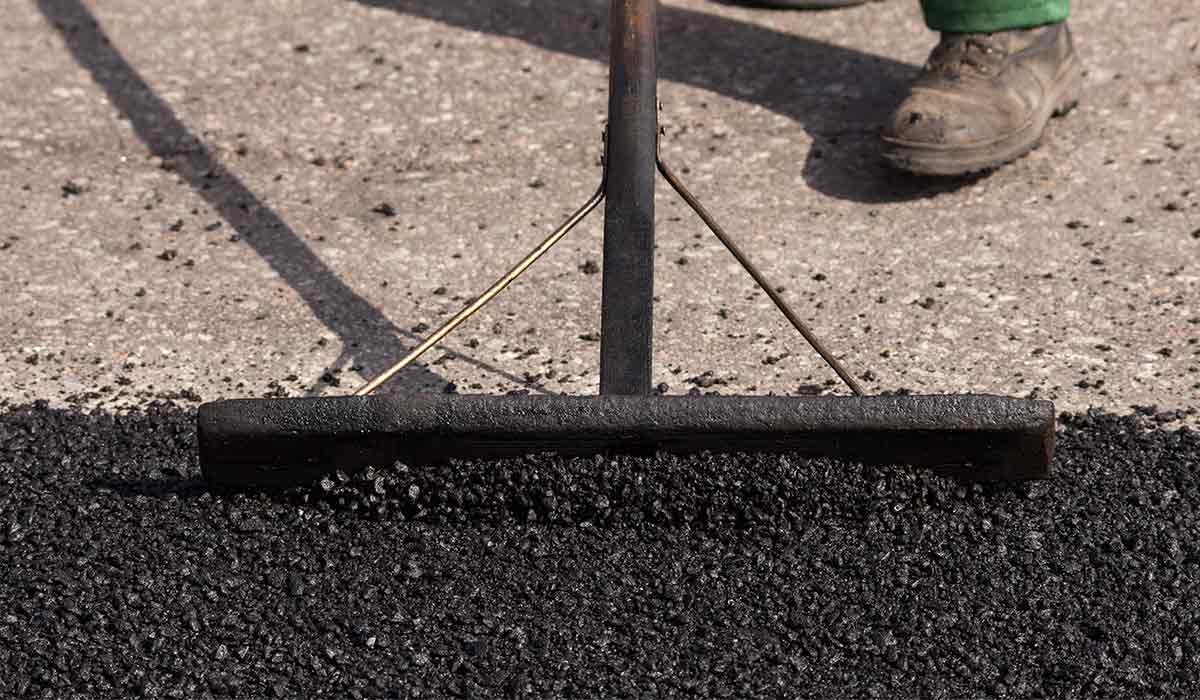The Best Guide To A1 Professional Asphalt & Sealing Llc
The Best Guide To A1 Professional Asphalt & Sealing Llc
Blog Article
The smart Trick of A1 Professional Asphalt & Sealing Llc That Nobody is Talking About
Table of ContentsRumored Buzz on A1 Professional Asphalt & Sealing LlcThe Of A1 Professional Asphalt & Sealing LlcSome Known Details About A1 Professional Asphalt & Sealing Llc The 30-Second Trick For A1 Professional Asphalt & Sealing LlcLittle Known Facts About A1 Professional Asphalt & Sealing Llc.

The oil in an auto engine is not just oil. The REOB has all the additives that were in the waste oil as well as the wear steels from the engine (mainly iron and copper).
However, by making numerous blends making use of various REOB examples and various asphalt binders, the variations mostly can be averaged out. A number of States supplied examples of recognized REOB structure to TFHRC scientists, that assessed the examples to contrast the percent of included (understood) REOB to the located (examined) quantity. The evaluations revealed an equivalent percent of included and located REOB.
A1 Professional Asphalt & Sealing Llc Fundamentals Explained
They got an overwhelming response. The TFHRC scientists evaluated 1,532 samples from 40 States, one Canadian district, and two Federal Lands Freeway divisions. They analyzed each example twiceamounting to more than 3,000 evaluations. None of those States recognized that the asphalt they were purchasing contained REOB. One State urged its samples had no REOB.
Of the 1,532 samples evaluated, 12 percent had REOB, and some included considerably high degrees of it at 1020 percent. The highest degree was 34 percent in a sample from Texas, which TxDOT had used in a patching substance. This screening also revealed the visibility of phosphoric acid in 11 percent of the samples, and 2 percent contained ground tire rubber.
2 years back at TRB's annual conference, the Federal researchers held an REOB workshop and offered the searchings for of their laboratory evaluations to a standing room-only group. Some agencies do not particularly ban REOB, they do impose physical examinations that prevent its useeffectively a restriction. Others do not ban it by specification, yet have arrangements with asphalt providers to stay clear of making use of REOB
Fascination About A1 Professional Asphalt & Sealing Llc
A handful do allow REOB, some within certain limitations. For instance, Ohio and Texas restriction degrees to much less than 5 percent of the asphalt. To create a reputable test technique that all States can utilize, the TFHRC researchers established up a round-robin test plan. The participants are 11 State highway agencies (Illinois, Massachusetts, Minnesota, Mississippi, Montana, North Carolina, Oklahoma, South Carolina, Texas, Vermont, and Wyoming), 2 independent testing Our site labs, the Ministry of Transport in Ontario, Queen's University in Ontario, and an Ontario paving professional.
In overall, the researchers prepared and shipped 720 blends. The participants are testing the examples individually making use of the standards supplied by the TFHRC researchers. The round-robin testing is virtually finished, and TFHRC is in the process of collecting the outcomes. The result will be a proposed AASHTO examination approach that any type of State can embrace and use (a1 professional).
The sidewalk with REOB, which lies 0.6 mile (1 kilometer) from the sidewalk without REOB, has identical subgrade, website traffic thickness, and climate. The sector of Highway655 with 5 to 10 percent REOB showed considerable breaking. In this instance, the presence of REOB was the determined source of splitting at a low temperatures.
"In our experience in copyright, even little quantities of 23 percent can be an issue." An area of test pavement in Minnesota (MN1-4) located to include REOB additionally broke prematurely. The pavement done well for the first 3 to 4 years, however after that began to break. This sidewalk is additionally subject to low temperature levels.
The smart Trick of A1 Professional Asphalt & Sealing Llc That Nobody is Discussing
The tests were not comprehensive, but they showed that at levels of 6 percent or more, the tensile strength of the asphalt went down dramatically. At a degree of 3.5 percent REOB, the variation in the physical test methods was more than the result of REOB. In truth, it was tough for researchers to assess whether REOB was present.

One binder specification thought about is the difference in between the reduced temperature vital specification temperature for rigidity (S) in the flexing beam of light rheometer and the bending light beam rheometer creep incline (m-value) noted as Tcritical. TC = TC (S) TC (m-value). Assessment of this parameter is still recurring. 2 independent study groups, one from AASHTO and the various other from the Asphalt Institute, concluded that even more study is needed on using REOB in asphalt.
Formerly, all asphalt testing measured design homes such as tightness. These tests do not show what products had been included to the asphalt.

About A1 Professional Asphalt & Sealing Llc
These results show there are weak points in the standard engineering testing methods that might be made use of. The manufacturer may have an economic advantage and the item passes all the standardized examinations, however the product may not be advantageous to ensuring lasting efficiency. To address this concern and the growth of new asphalt ingredients and extenders, TFHRC is beginning a research program to make use of portable spectroscopic gadgets, x-ray fluorescence spectroscopy, and Fourier transform infrared spectroscopy to make it possible for evaluations to be done in the area as opposed to having to take examples back to the lab.
Report this page